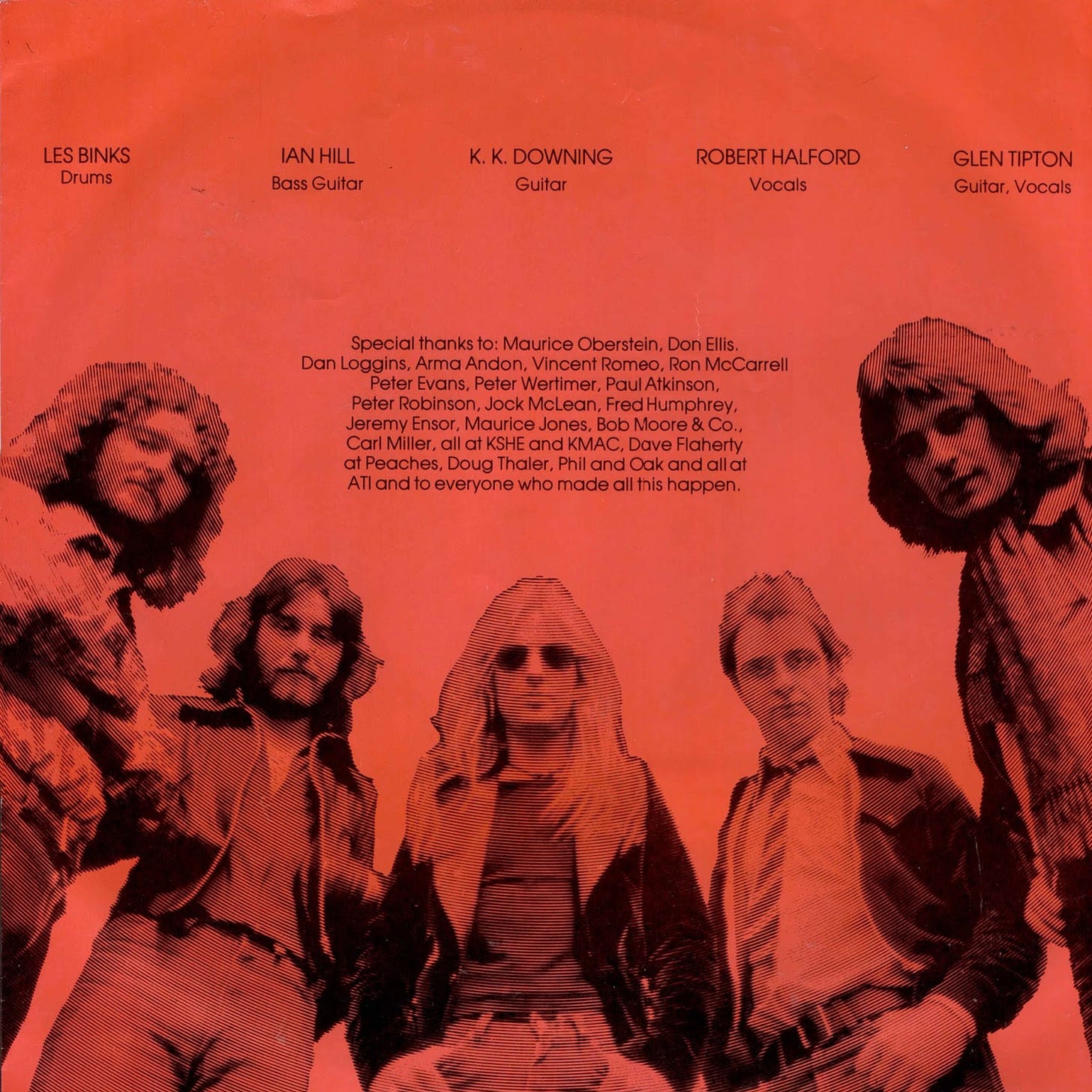Released: February 10, 1978
The Context
Judas Priest’s fourth album further refined their sound and approach: Stained Class debuted the band’s sleek and streamlined logo, while the addition of Les Binks as their full-time drummer after a year of touring gave the band a steady lineup (for the next couple years, at least). And although Priest wouldn’t home in on their leather-and-studs imagery until the next record, they toughened up their sound on record considerably, as Dennis Mackay’s production emphasized the power of Glenn Tipton and K.K. Downing’s riffing along with the intensity of Binks’ percussion. The writing was likewise sleeker and more focused, maintaining borderline-progressive levels of musicianship while slicing off the detours that made Sin After Sin meander in spots (albeit in a good way).
The (Original) Reception
Stained Class wasn’t a commercial success, though CBS provided enough support for the band to continue to increase their profile as a touring act. They continued to open for larger acts and worked market by market, but the attempt at a single with the cover of “Better by You, Better than Me” (forced upon the band by CBS in order to alleviate what they saw as a very dark album) went nowhere, though it would have unintended consequences further down the road.
Among the nascent heavy metal scene, however, Stained Class was hailed as a milestone achievement for the still-developing genre. The passionate few who recognized metal as a genre immediately recognized what they saw as a leveling up of the music as well as the band that recorded. And because they immediately embraced “heavy metal” as a descriptor of their music, Priest and Stained Class became signifiers of what the genre was and could be.
How Does It Hold Up?
Perfectly (in case the subheader didn’t give that away).
From top to bottom, Stained Class was Judas Priest’s first true masterpiece, further advancing their previous breakthroughs on Sad Wings of Destiny and Sin After Sin and crafting something entirely unique to them. If those two predecessors had traces of Sabbath looseness and Zeppelin heavy blues workouts, every note on this album had a place and purpose. The production was razor sharp and only sounded of its time in the way that late ‘70s records had a particular warmth to them.
Seemingly without trying, the songs on this album pointed to several paths forward for heavy metal as a whole: there was the proto-thrash of “Exciter”, “Saints in Hell” and “Savage” laid the blueprint for metal vocals and chugging riffs, “Beyond the Realms of Death” was the template upon which Metallica built their power ballads, “Heroes End” and “Savage” offered pithy commentary and the overall precision and dynamics in the music paved the way for math metal and djent.
Perhaps most of all, Stained Class presented Priest at their most focused as writers and players: Simon Phillips may have introduced certain drumming concepts on Sin After Sin, but Binks’ jazz-influenced technique added a new complexity and practically invented thrash drumming. Tipton and Downing similarly leveled up, as every riff and solo was memorable and fit perfectly within the context of each track. Every note sounded completely locked in, and every wail from Rob(ert) Halford roared with conviction. From a lyrical standpoint, this was the best work Tipton and Halford ever turned in: the words were frequently cynical and bleak, but consistently thoughtful and almost never cliche.
It was telling that Judas Priest would never again record something as dark, precise and progressive as Stained Class: one could attribute that to their desire for mainstream success, but it was just as plausible that they felt they had nowhere else to go after this but to try something a little more straightforward.
Ultimately, while there is plenty of debate over which Judas Priest album is their best, the general consensus is that Stained Class belongs near the top, if not all the way there. 45 years after its original release, the album remains a landmark for the band as well as the genre as a whole, with multiple subgenres tracing their origins back to this record.






